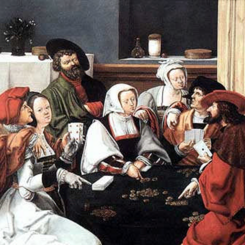56: Number cards and Chinese Crackers
A brief look at the number cards used in standard English packs.
On pages 28 and 29 I looked at number cards by De La Rue and James English, respectively, in order to help with dating and to show index variation. At first sight the number cards of standard English packs might not be the most exciting of topics to devote a whole page to. Compare this with those packs, some of which are standard regional patterns, which do have decorative number cards, for example the German regional patterns and tarot packs. And there are all the non-standard and transformation cards, too. Here's a selection.

Above: Piatnik Czech Heroes, 1944

Above: Prussian pattern

Above: the Jugendstil pack (reproduction)

Above: Casanova by Philibert

Above: Transformation "cartes à rire" by Louis Atthalin, 1814-15 (reproduction)

Above: modern transformation by Schick
[Thanks to Rex Pitts for most of the above illustrations.]
However, it's quite instructive to look at the history of number cards and to realize how little variation there is. First of all, it's quite remarkable to note that the basic arrangement of the pips on both English and French cards goes back several hundred years. The English pattern inherited the pip arrangement of the French regional patterns, so single-ended pip cards were the same for many different patterns. This arrangement was exported to wherever the French patterns were used. The one exception is to be found in the United States, where several makers had sevens with the central pip at the bottom rather than at the top of the card, though this could be inconsistent within one pack.


English c.1680


Above: US 7C by Dougherty, here with added illumination; and black sevens from a Crehor pack by Dougherty
When double-ended pip cards were introduced in France and in England, there was a difference in how this was achieved. French pips change direction on the diagonal, whereas English pips have a horizontal division as follows: 2 = 1/1; 3 = 2/1; 4 = 2/2; 5 = 3/2 (these are the same in French packs). 6 = 4/2; 7 = 5/2; 8 = 5/3; 9 = 5/4; 10 = 5/5. Once again the American version is different for some makers with 7 = 4/3. American cards had double-ended number cards quite early, but they were often packed with single-ended courts. It was the other way round in England: double-ended courts are found with single-ended numbers into the 1880s.

French number cards from c.1870
It's sometimes possible to find English pattern cards with the French arrangement, if they have been made in France or some other European countries. It's also possible to find packs from America and elsewhere in which the sevens are variable between 4/3 and 5/2 for no apparent reason. I even have a De La Rue patience pack like this, whereas most examples of his are consistently 5/2.

Above: two sevens from a Dougherty pack of c.1860; a rare example from USPCC of c.1900, usually they were consistent with the English arrangement.
Interestingly, the one English firm that experimented with different ways of double-ending was Bancks Brothers. Late in the Old Frizzle period they had a small-format double-ended pack with turned courts (HB4) in which the number cards are divided diagonally, as in France.


Above: Bancks HB4, c.1860
A little later the firm tried a different method in which all the pips on one side of the card went one way. These are full-size packs with double-ended courts.


Above: Bancks HB1.1 with unusual orientation of double-ended pips, c.1870
Oddly, though, most of the later Bancks packs with double-ended courts had single-ended number cards, even those with HB6 printed by letterpress.
Clearly we are dealing here with an arbitrary tradition, but one which is fairly well adhered to. In cases where producers are not au fait with the tradition, all sorts of arrangements can occur. Makers recently established sometimes break with tradition: Richard Edward, in his early packs of c.1995-2000, arranged his pips in a very odd way, even using the traditional positions. Below, the arrangement on the seven is 5/2 but the gap between the two sets of suit signs is rather large; the eight is 4/4, not 5/3, and the nine is 5/4, but with the central pip at the top not in the middle.

Games & Print Services used the American arrangement on their sevens: 4/3 in their earliest packs.

The pip cards of the American reproductions of the Pierre Maréchal pack and the English single-figure pack (wrongly ascribed to a non-existent Bamford) using the illustrations from Gurney Benham's book are not in the least traditional; they illustrate a complete lack of observation.

And this brings me to Chinese Crackers. English playing cards are not traditional to the Far East, even though they've been accepted there in the course of interactions with Britain and the US. As we know, playing cards are now produced in their millions in China, Hong Kong and Taiwan, as well as Japan and India, but there is evidence that the tradition is still meaningless to those who actually design them. I'm still working on pages dealing with the court designs to be found produced in China and there are several oddities amongst them. But the number cards also come in for some rearrangement, which is quite difficult to explain as anything other than an arbitrary whim. Even though the vast majority of packs are just like their models, there are some unusual ones, such as those below. My favourite is the 10D that's actually the same as the 9D with a 10-index! And the 10S and 9S are also odd in that they are 3/2/2/3 and 2/2/3/2, respectively.

The odd arrangement on the 7H only: 2/1/2/2 can be found in a number of bridge packs and one court figure used for each suit is a common ploy for any maker who wants to cut costs. In the example below it's the heart courts being given extra duties.

The odd arrangement of nines noted above in Richard Edward packs can also be found, here with redrawn faces on the courts.

Below is a recent acquisition, which has a weird selection of courts: they are from three different court designs and even two of the kings have been turned. The eights and nines have the odd pip arrangement noted in other packs. Can you tell which courts come from which American originals?



By Ken Lodge
Member since May 14, 2012
I'm Ken Lodge and have been collecting playing cards since I was about eighteen months old (1945). I am also a trained academic, so I can observe and analyze reasonably well. I've applied these analytical techniques over a long period of time to the study of playing cards and have managed to assemble a large amount of information about them, especially those of the standard English pattern. About Ken Lodge →
Trending Articles
Popular articles from the past 28 days
Related Articles
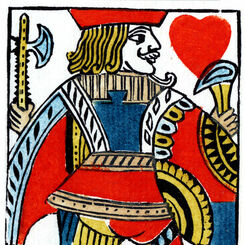
Woodblock and Stencil Jack of Hearts
A limited edition art print of the Jack of Hearts 1984 woodblock joker.
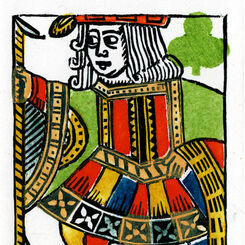
Woodblock and Stencil Jack of Clubs
A limited edition art print of the Jack of Clubs 1984 woodblock joker.
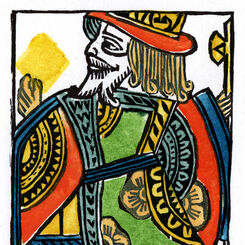
Woodblock and Stencil King of Diamonds
A limited edition art print of the King of Diamonds 1984 woodblock joker.
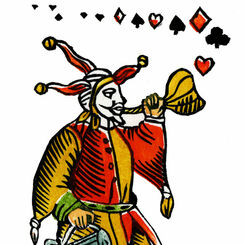
Woodblock and Stencil Joker
A limited edition art print of the 1984 woodblock joker.
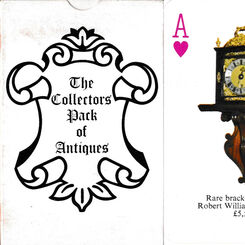
Collectors pack of Antiques
Collectors pack of Antiques playing cards published by Collectors Cards, Abertillery, South Wales, c...
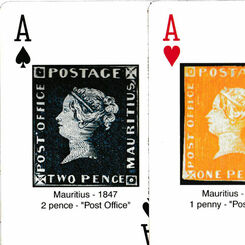
Rare Stamps of the World
Fifty-five rare stamps of the world in full colour, published jointly by David Feldman SA of Switzer...
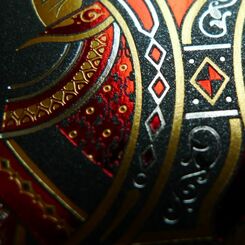
Luxury Collectable Playing Cards
Luxury packs of cards have been produced since the 15th century, a trend that is very popular among ...
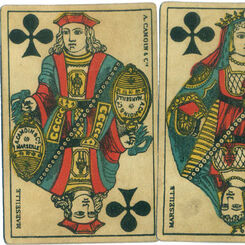
A. Camoin & Cie
This deck was inherited from ancestors, it has has a family history surrounding it. Details of the l...
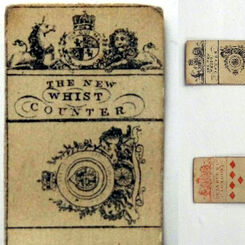
Why do we Collect? My 20 Favourite Items
I suppose people collect for different reasons, rarity, quality, ingenuity of design, sentimental va...
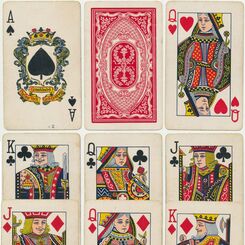
A Case Study
Case Study: using detective work to identify and date a pack discovered in charity shop.
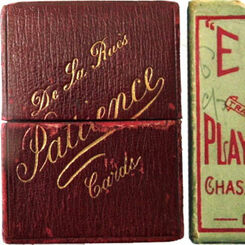
Patience Cards and their Boxes
Patience Cards and their Boxes by Tony Hall.
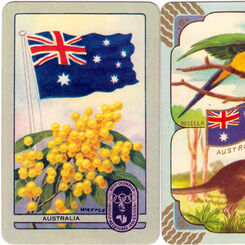
Collecting Playing Cards with Jan Walls
I collected playing cards when I was in primary school, by Jan Walls.
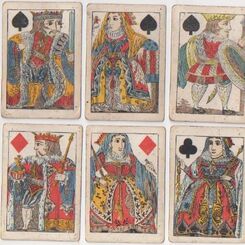
69: My Collection
This is an archive list of my collection. I hope it will be of use and interest to others.
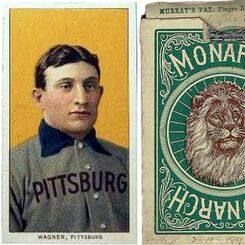
Is Card Collecting an Investment?
“Is Card Collecting an Investment?” - an article by Rod Starling.
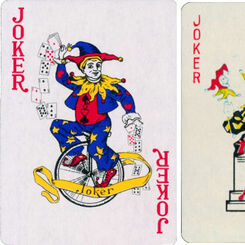
Chinese Jokers
Chinese playing card makers have probably produced the widest variety of jokers of any single part o...
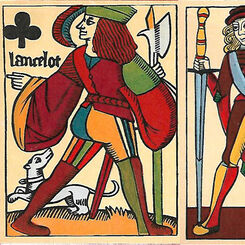
A Look Back with Hope for the Future
“A Look Back with Hope for the Future” by Rod Starling
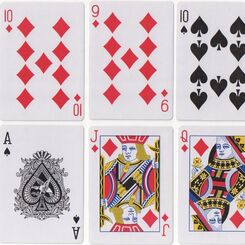
56: Number cards and Chinese Crackers
A brief look at the number cards used in standard English packs.
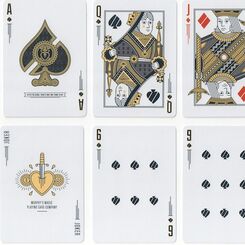
51: Some modern variation
A brief survey of some of the current variation in the standard English pattern.
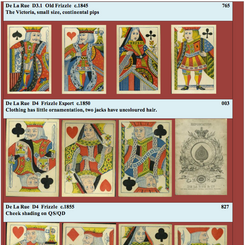
49: De La Rue in detail
A detailed presentation of the variants of De La Rue's standard cards.

Interview with Tom and Judy Dawson from 52 Plus Joker
Interview with Tom and Judy Dawson from 52 Plus Joker. Chatting about the history of playing cards, ...
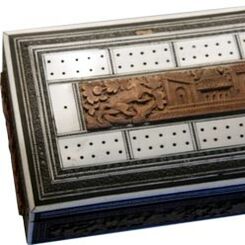
Cribbage Board Collection
A collection of antique and vintage Cribbage Boards by Tony Hall

Collecting Playing Cards
How I began Collecting Playing Cards by Robert S. Lancaster.
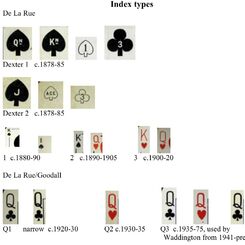
41: A Guide to Dating Playing Cards
Dating is a particularly tricky but very interesting problem to tackle and there are many pitfalls. ...
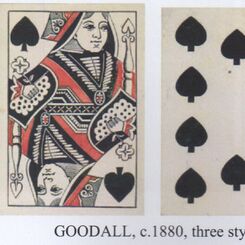
39: Mixed Packs
A number of mixed packs appear for sale from time to time, but it's important to sort out what is me...
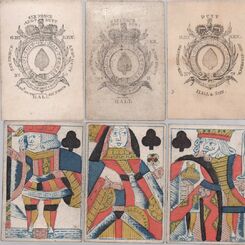
26: Playing Cards: Rarity, Value, Dating, Sellers and eBay
Notions like rarity and monetary value are slippery customers and need careful handling. And there...
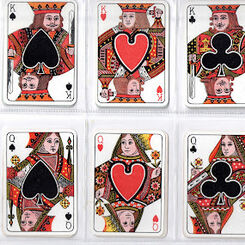
15: Perforated Cards, Metal Finish and Other Oddities
There are some unusual designs in playing cards, even the shape of the card.
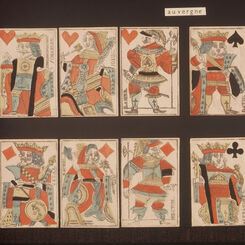
11: Some Cards From Sylvia Mann’s Collection
A fascinating collection that was the basis of a lot of research that we still benefit from today.
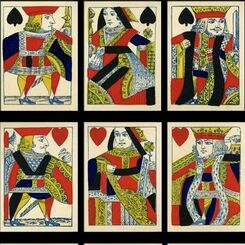
2: Still Collecting Playing Cards at 80
This is a personal account of some of my experiences collecting playing cards.

Dr Ken Lodge
I'm Ken Lodge and have been collecting playing cards since I was about eighteen months old (1945). ...
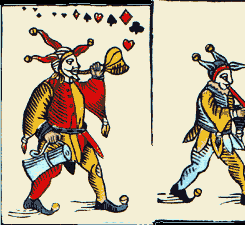
The Joker Card
The 'Joker' is believed to have been invented by American Euchre players who, when modifying the rul...
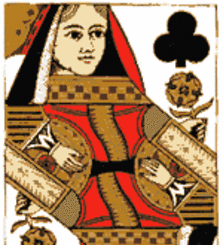
Standard and Non-standard Playing Cards
Standard playing cards are based upon traditional designs and are used for card games.



